



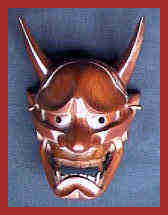
 |

If the Kabuki theater with all its
pomp and pageantry, its
colorful costumes,
revolving stage and
violent actions and emotions could be called
the "yang"
of Japanese drama, then Noh surely
is its "yin" counterpart.

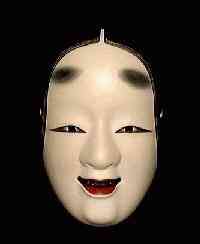 |

Noh drama, it is
said, originated with simple popular
folk dances and plays Unlike Kabuki, Noh plays are
performed on an almost bare stage,
that were performed at
Shinto festivals to pray to the gods for
abundant
harvests and to give thanks after the harvest.By the fourteenth century,
these
simple performances had developed into
symbolic
dances performed at the imperial
court in Nara.
open on
three sides, simple and plain having neither
a curtain nor
background scenery except for a
pine tree painted on the rear
wall.

|
Two actors usually perform on stage, the protagonist, who is frequently
the spirit of a person tied to this earth by worldly desires but longing
for salvation and his assistant; both are elaborately costumed
and
wear masks. There
may also be two or three minor characters and
there is always a chorus, kneeling on the
right side of the stage,
reciting the
narrative and describing the changes of
scene. The
musical accompaniment is not music
in the western sense,
it is pure sound
provided by three drums and a
flute.
 |
The plays are usually brief and several short
dramas are performed
at a single sitting.
Interspersed between the Noh dramas are comic
skits known as "Kyogen ("crazy words") which
offer burlesques
of feudal society and
provide comic relief for the unremitting
gloom
that pervades nearly all of Noh. The broad and
slapstick humor of Kyogen often
depicts clever
servants outwitting their
samurai masters.
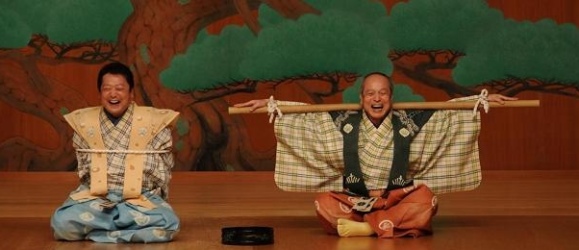
|
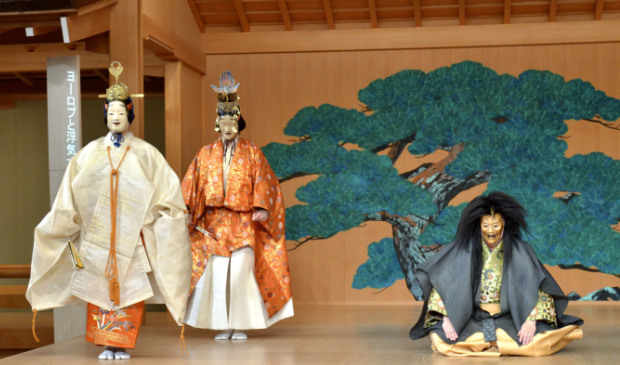 |
The principal actor's movements and gestures, however minute, are highly stylized,
formal and carefully
measured. Mime constitutes an important part
of the drama;
feelings are expressed in
symbolic gestures and movements. The
manipulation
of a fan can symbolize falling
leaves, rippling water or a rising moon;
weeping is expressed by raising a hand to the
eyes.
 |
The aim of Noh is to express a desire or yearning, not for beauty, but for Although not specifically Zen
inspired, one observer has noted that Noh in a way is like a fermented bean concoction
the beauty we dream. The worth of the play then depends less upon the
truth or moral, but
upon the total effect of the beauty produced
- poetry.
Noh
offers an excellent example of the highly
refined and disciplined
spirit of Zen
aesthetics. Noh, although it cannot be
described as a
popular art among the Japanese
people as a whole, does have its
supporters
who, attend the theaters as connoisseurs with
script
in hand, following the actor's every
movement and word.
I have attended Noh
performances but must admit that
I prefer
Kyogen and find them a welcome relief!
("natto") that some Japanese simply love
while
others prefer to simply leave.

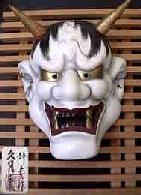 |
 ~NEXT~
~NEXT~


